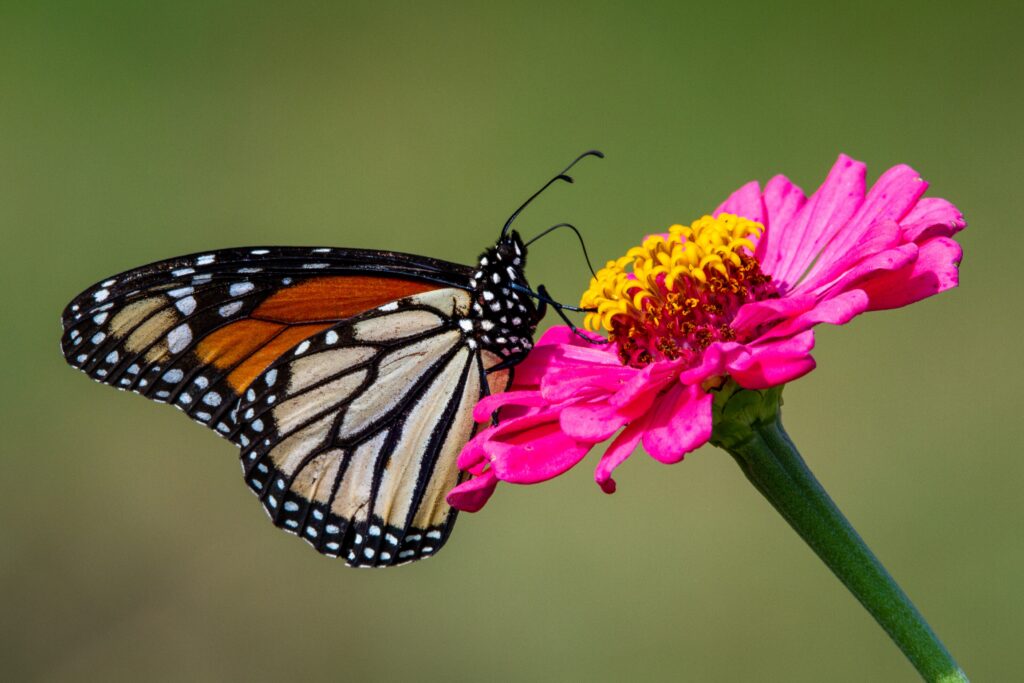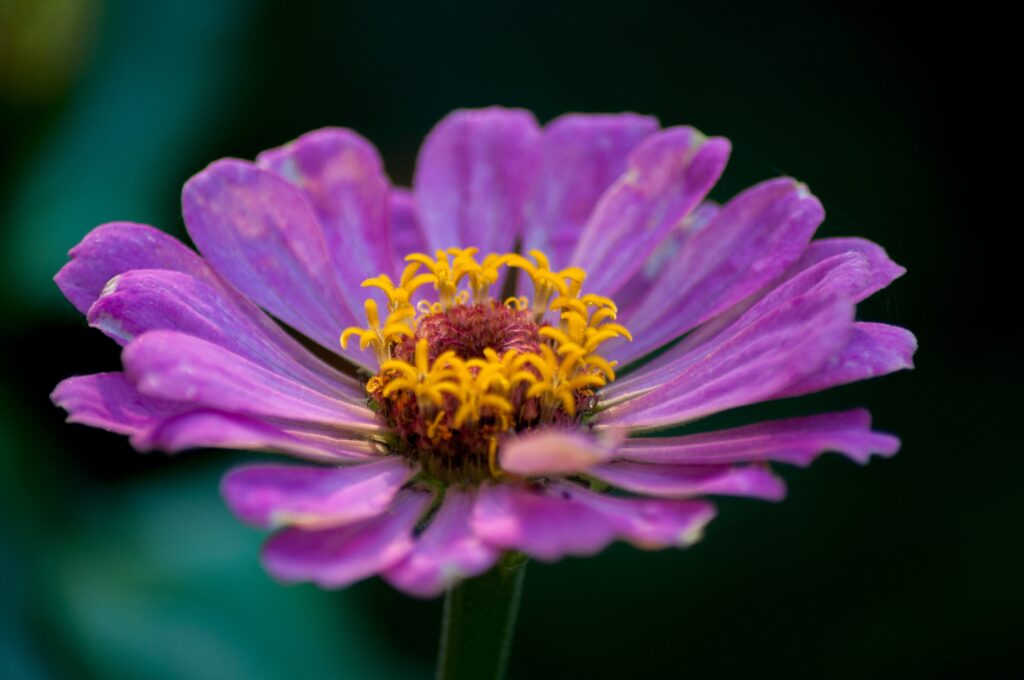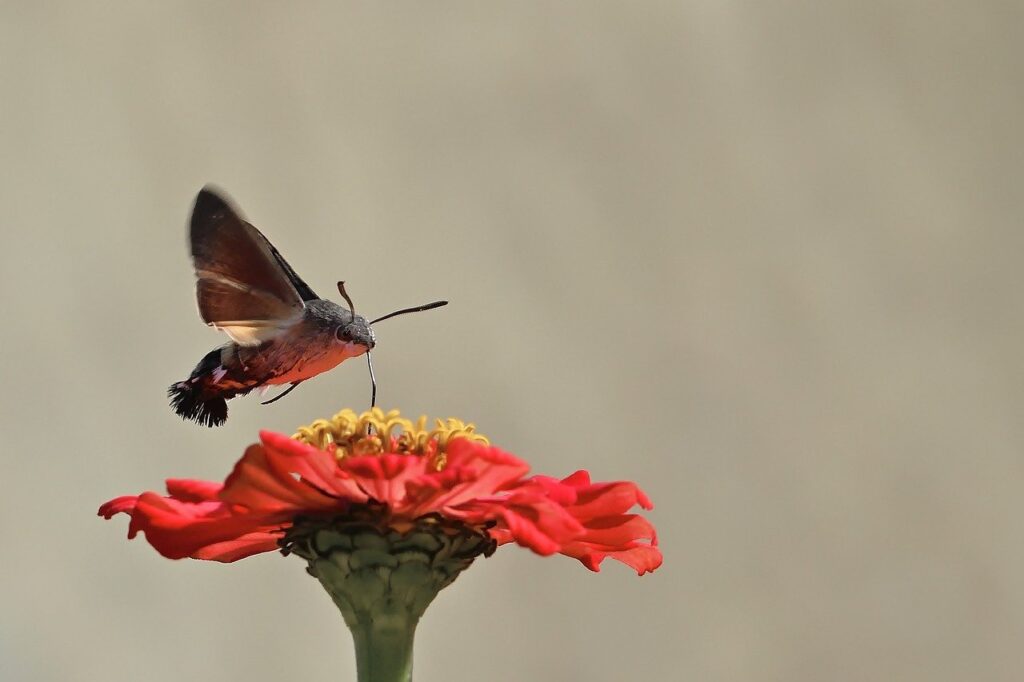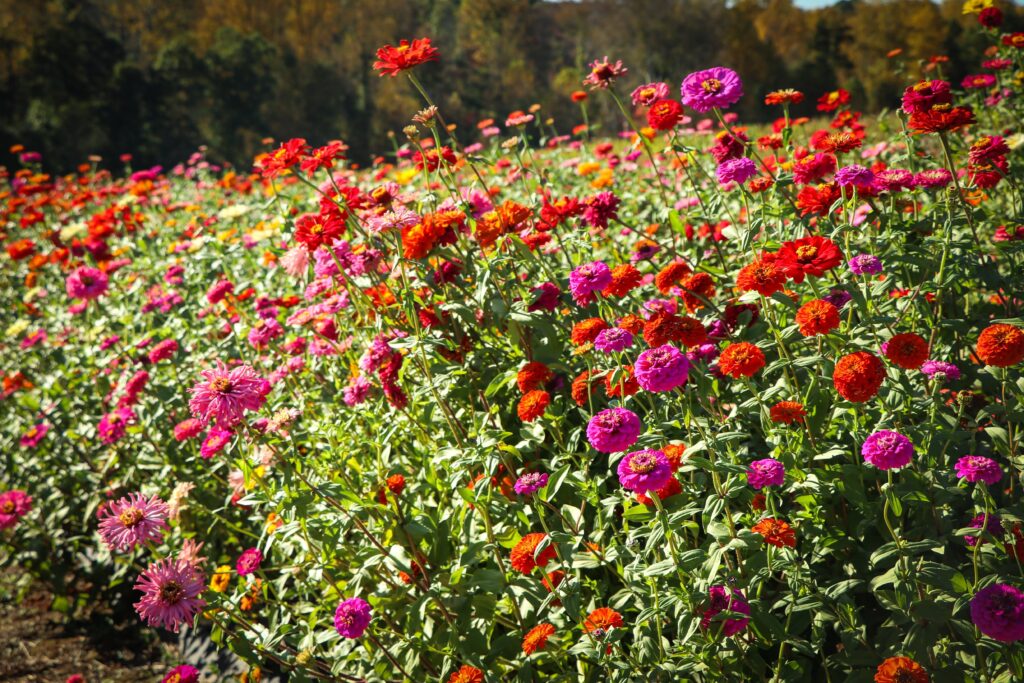Zinnias, scientifically known as Zinnia elegans, are annual flowering plants known for their vibrant and colorful blooms. They’re native to the arid regions of the southwestern United States and Mexico. Growing zinnias is one of the easiest garden tasks for gardeners.
Zinnias come in various flower colors and are well-suited for garden beds, containers, and cut flower arrangements. They thrive in different USDA hardiness zones and grow during the warmer seasons.
When to Start Zinnia Seeds
In Zones 3-5, you can start zinnia seeds indoors 6-8 weeks before the last expected frost date in your area. The long growing season compensates for the short summer.
In Zones 6-8, begin indoor seeding 4-6 weeks before the last frost date, as these regions have a slightly longer growing season.
In Zones 9-12, start growing zinnias by sowing directly in early spring or late summer. You can also start them indoors in winter for planting out in the early spring. You may also want to start them indoors in late summer for planting out in early fall.

How to Start Zinnia Seeds
Select or prepare a well-draining, sterile seed starting mix suitable for growing zinnias. It should be fine-textured and retain a little moisture.
Use cell trays, small pots, or soil blocks. Ensure they have drainage holes to prevent waterlogging.
Sow zinnia seeds ¼ inch deep. Gently press them into the soil but avoid burying them too deep.
Keep the soil consistently moist but not waterlogged. A spray bottle or mister can help maintain moisture without disturbing seeds.
Maintain a consistent temperature of 70-75°F (21-24°C) for optimal germination.
Cover the trays with a clear plastic lid or plastic wrap until sprouts appear.
Zinnia seeds typically germinate in 5-7 days.

When Your Zinnia Plants Are Ready for the Garden
Zinnia seedlings are ready for transplanting when they have at least two sets of true leaves and are 4 to 6 inches tall.
How to Prepare Garden Bed for Zinnias:
Choose a sunny location with at least 6-8 hours of direct sunlight per day. Zinnias thrive in full sun.
Ensure well-drained soil, as growing zinnias in waterlogged conditions is extremely difficult. Error on the side of dry locations.
Zinnias prefer loamy soil rich in organic matter. A slightly acidic to neutral pH (around 6.0-7.0) is ideal.
Hardening Off Zinnia Starter Plants
Zinnias prefer warm to hot temperatures so ensure you allow them to get accustomed to the outdoor weather if planting in early spring before the days have truly warmed up.
Gradually expose seedlings to outdoor conditions over 7-10 days, starting with a few hours in a shaded area and gradually increasing their exposure to sunlight and outdoor temperatures.
How to Plant Zinnias into the Garden:
Plant zinnia seedlings at the same depth as they were in the seed trays. Space zinnias 12-18 inches apart, depending on the variety. They need some room to spread to allow ventilation and prevent mildew.
Water thoroughly after planting out. If desired, apply a 2-3 inch layer of organic mulch such as woodchips to help retain moisture and deter weeds.

Caring for Zinnia Plants:
Zinnias thrive when the soil is consistently moist but not waterlogged. To maintain proper moisture levels:
- Water at the base of the plants, avoiding wetting the foliage, especially in the evening to prevent fungal issues.
- During dry spells, provide deep, thorough watering rather than frequent shallow watering. This encourages deep root growth.
Zinnias benefit from regular feeding to ensure healthy growth and abundant blooms:
Use a formula designed for flowers, and choosing a slow-release formula will help save work in the garden. Apply every one to three months as recommended by the manufacturer.
Fertilizing your growing zinnias helps replenish soil nutrients and supports their continuous flowering.
Regular weeding is essential to maintain the health and vigor of your zinnia plants:
Deadheading, or the removal of spent flowers, encourages zinnias to produce more blooms. This process prevents the plant from diverting energy into seed production. It also promotes a longer blooming period, extending the beauty of your zinnia display.
Some zinnia varieties may benefit from pinching back or light pruning to encourage bushier growth. To do this, pinch or cut back the growing tips of young zinnia plants when they reach 6-8 inches in height.

Pinching or pruning encourages lateral branching and more compact, fuller plants.
Taller zinnia varieties, such as ‘California Giant,’ may require support to prevent flopping over, especially in windy conditions or after heavy rainfall:
Install stakes or use plant supports to provide structural support to the plants.
Attach the stems to the supports using soft ties or twine to prevent damage.
To prevent and manage diseases that may affect your growing zinnias, ensure good air circulation by providing adequate spacing between zinnia plants. Avoid overhead watering to reduce the risk of fungal diseases.
If you notice signs of diseases such as powdery mildew or leaf spot, promptly remove affected leaves and dispose of them away from the garden.

What to Expect from Your Growing Zinnias
Zinnias will bloom throughout the growing season, from late spring to fall, depending on your location. In all USDA zones, zinnias are annuals and will not survive winter.
Harvesting Zinnias for Cut Flowers
Harvest zinnias in the morning when the blooms are just starting to open. Place them in a bucket of water and recut their stems under running water before arranging them in a vase. Change the water every 2-3 days.
Harvesting Zinnia Seeds
Allow zinnia flowers to fully mature and dry on the plant. Harvest the dried flower heads and remove the seeds. Store the seeds in a cool, dry place in an airtight container.
By following these steps and guidelines, you can enjoy the vibrant beauty of zinnias in your garden or as cut flowers in your home. Proper care and attention will ensure a season filled with their delightful colors and cheerful blooms. Growing zinnias will bring bees and butterflies to your garden.
